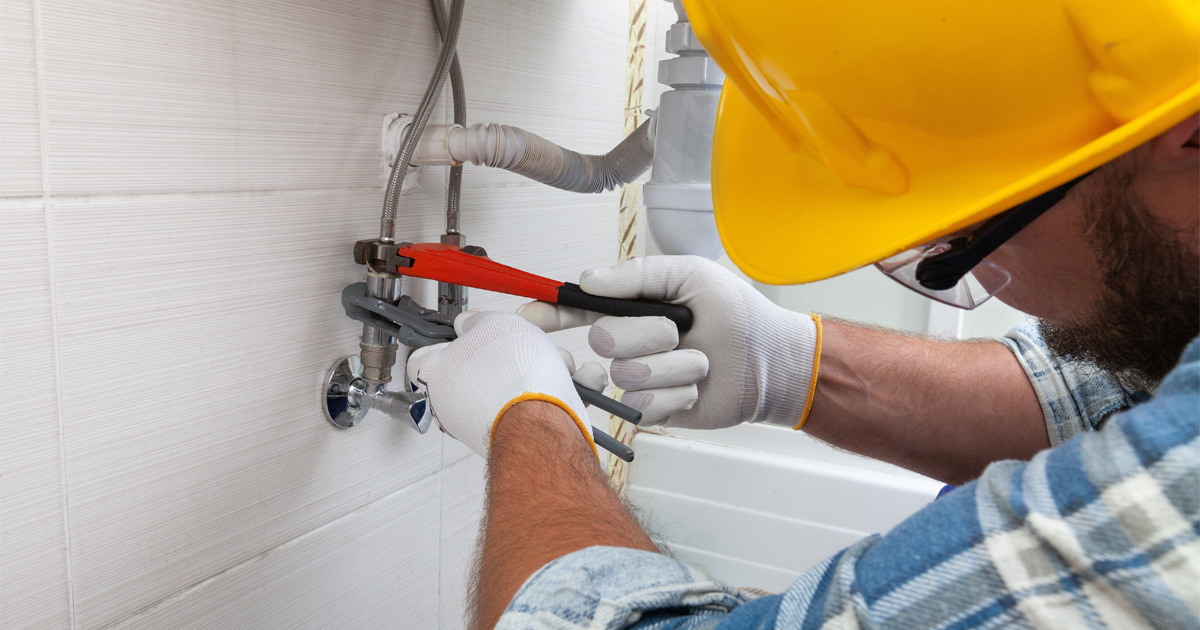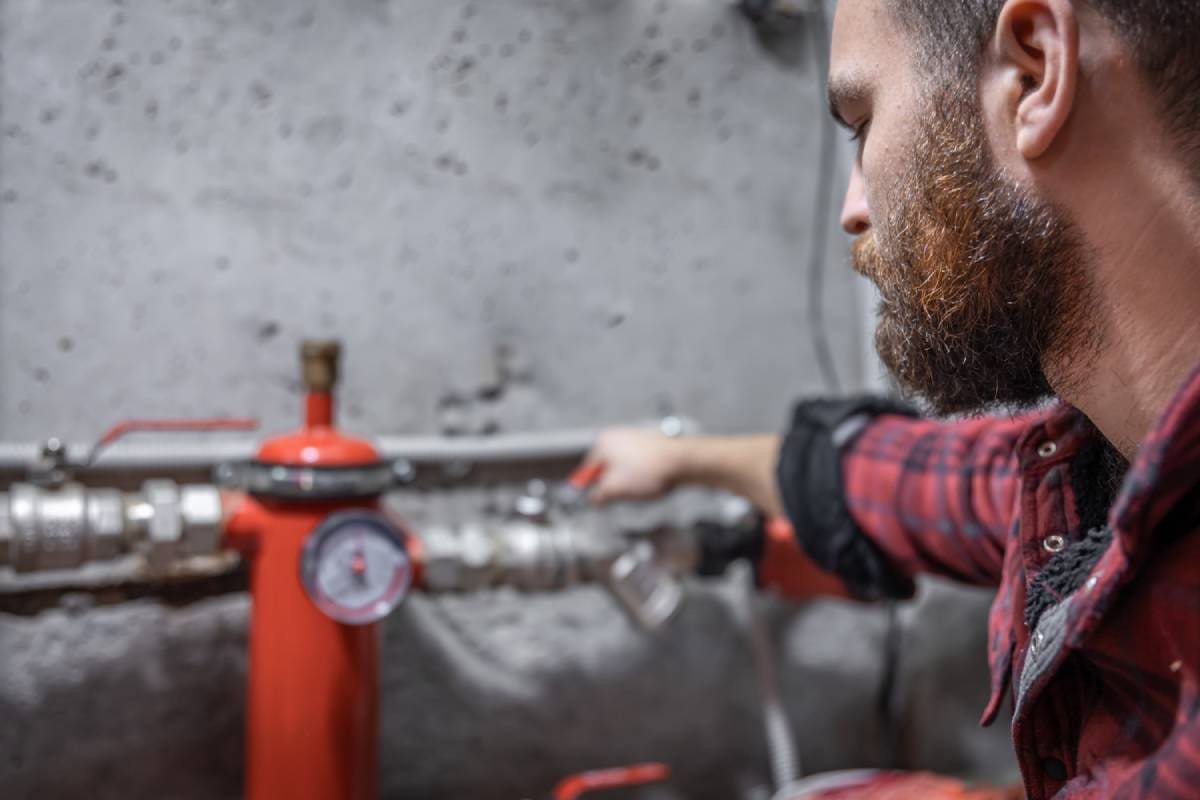Acquiring Insight into Home Plumbing Basics: A Beginner's Introduction
Acquiring Insight into Home Plumbing Basics: A Beginner's Introduction
Blog Article
Here underneath you can locate a good deal of amazing answers when it comes to Understanding the Basics of Your Home's Plumbing System.

Plumbing is a necessary element of any home, in charge of supplying tidy water for alcohol consumption, cooking, and showering, along with eliminating wastewater securely. Comprehending the basics of home plumbing is crucial for each property owner to make certain appropriate maintenance, troubleshooting, and, if necessary, repair services. In this beginner's overview, we'll cover the essential principles of home plumbing to assist you come to be a lot more knowledgeable about just how it works.
Water Heating System
The water heater is responsible for home heating water for domestic use, consisting of bathing, food preparation, and cleaning. Typical kinds of hot water heater include tank-type hot water heater, tankless (on-demand) water heaters, and heat pump hot water heater. The water heater is linked to the water system and delivers warm water to plumbing fixtures as required.
Water drainage System
The drainage system eliminates wastewater from your home and lugs it away to a sewage therapy center or septic system. It includes a network of pipelines, fittings, and fixtures that move wastewater from plumbing fixtures to the primary sewage system line or septic tank. Proper drain is vital to prevent blockages, back-ups, and sewer leakages.
Ventilation System
The ventilation system assists keep correct air pressure and avoid drain gases from entering your home. Air vent pipelines, likewise known as vent heaps, prolong from plumbing components to the roofing system, permitting drain gases to escape safely outside. Air flow pipes also allow air to get in the drainage system, helping with smooth wastewater circulation and avoiding suction or vacuum cleaner results.
Water System
The water system system brings tidy water right into your home from a metropolitan water source or a private well. It consists of a main water line that connects to your home's plumbing system, usually located underground. A water meter gauges the quantity of water consumed, while a shut-off valve allows you to regulate the circulation of water right into your home.
Plumbing Components
Plumbing components are gadgets that provide water to different parts of your home and include sinks, faucets, toilets, showers, bathtubs, and appliances such as dishwashers and cleaning equipments. Each component is linked to the supply of water system through pipes and fittings and might have its shut-off shutoff for maintenance or emergencies.
Usual Plumbing Devices
Having the right devices available is vital for carrying out basic plumbing fixings and upkeep jobs. Typical plumbing tools consist of adjustable wrenches, pipe wrenches, pliers, pipeline cutters, hacksaws, plungers, augers (or drainpipe serpents), and Teflon tape. Having these tools conveniently offered can assist you tackle small plumbing problems efficiently.
Standard Plumbing Repair Services
While some plumbing repair work might need professional assistance, several typical issues can be resolved with basic do it yourself methods. Learning just how to repair a dripping faucet, unclog a drainpipe, replace a toilet flapper, or fix a dripping showerhead can conserve you time and money on plumbing repair services.
Conclusion
Recognizing the basics of home plumbing is necessary for every homeowner to preserve a safe, functional, and efficient plumbing system. By familiarizing on your own with the supply of water system, plumbing fixtures, drainage system, air flow system, usual plumbing devices, and fundamental fixings, you can with confidence address small plumbing issues and guarantee your home's plumbing system operates efficiently.
Plumbing for Beginners: A Comprehensive Guide
If you’re a beginner when it comes to plumbing, don’t worry; you’re not alone. Plumbing may seem intimidating, but with the right knowledge and a little practice, you can handle many common plumbing issues on your own. In this comprehensive guide, we will demystify the world of plumbing for beginners, providing you with the basic knowledge and skills needed to tackle common plumbing problems and even take on some DIY plumbing projects.
The Importance of Basic Plumbing Knowledge for Beginners:
First and foremost, basic plumbing knowledge gives you a solid foundation. It helps you grasp the key concepts and terminology that are essential in this field. By learning the basics, you’ll be able to build upon that knowledge and tackle more complex plumbing tasks in the future.
Having a basic understanding of plumbing also enables you to handle common issues that may arise in your home. Picture this: a leaky faucet or a clogged drain. With some basic plumbing knowledge, you’ll have the confidence to troubleshoot and fix these problems on your own. It saves you from unnecessary expenses and the hassle of waiting for a professional to arrive.
As a beginner, learning the basics of plumbing empowers you to take care of your own home. It gives you a sense of independence and self-reliance. You’ll no longer have to rely solely on professionals for every small issue that pops up. Instead, you can handle many tasks yourself, saving time and money in the process.
Remember, everyone starts as a beginner. Embrace the learning process and take small steps to expand your plumbing knowledge. There are plenty of online resources, tutorials, and even local workshops that talk about plumbing for beginners.
Essential Tools for Plumbing for Beginners
As you start your plumbing journey, having the right tools in your toolbox is crucial. Let’s explore some of the must-have tools:
Adjustable Wrench:
This versatile tool is a staple in any plumber’s toolbox. It allows you to tighten or loosen nuts and bolts of various sizes. Make sure to have an adjustable wrench with a comfortable grip.
Pipe Wrench:
A pipe wrench is specifically designed for gripping and turning pipes. It has serrated jaws that provide a strong grip, making it easier to loosen or tighten threaded pipes and fittings.
Plunger:
The plunger is a simple yet effective tool for clearing clogged drains and toilets. It creates suction when you push and pull, helping to dislodge blockages. Keep a good-quality plunger handy for those unexpected clogs.
Pipe Cutter:
When it comes to cutting pipes, a pipe cutter is your go-to tool. It creates clean, precise cuts without damaging the pipe. Look for a pipe cutter that can handle the pipe sizes you’re working with.
Hacksaw:
A hacksaw is useful for cutting through pipes, screws, and other materials. It’s a versatile tool that can handle different cutting tasks. Remember to use a blade suitable for cutting metal.
Tape Measure:
Accurate measurements are crucial in plumbing. A tape measure allows you to measure pipe lengths, distances, and dimensions accurately. Opt for a sturdy tape measure that extends a good length.
Pliers:
Pliers come in handy for various tasks, such as gripping, bending, and cutting. Slip-joint pliers with adjustable jaws are great for gripping pipes, nuts, and bolts.

Hopefully you enjoyed our excerpt about Understanding the Basics of Your Home's Plumbing System. Thank you so much for taking time to browse our piece of content. Sharing is caring. You never know, you could be helping someone out. Thanks for taking the time to read it.
This Site Report this page